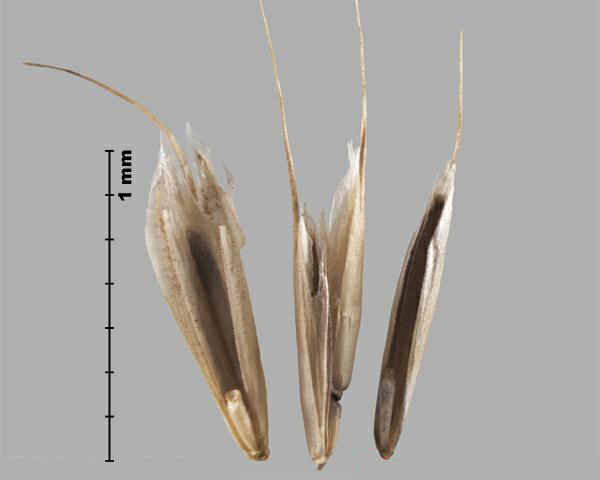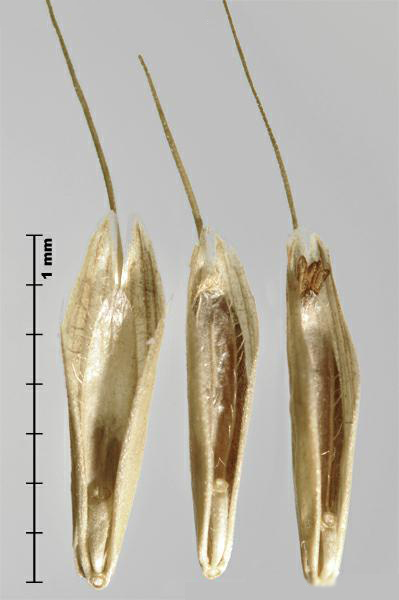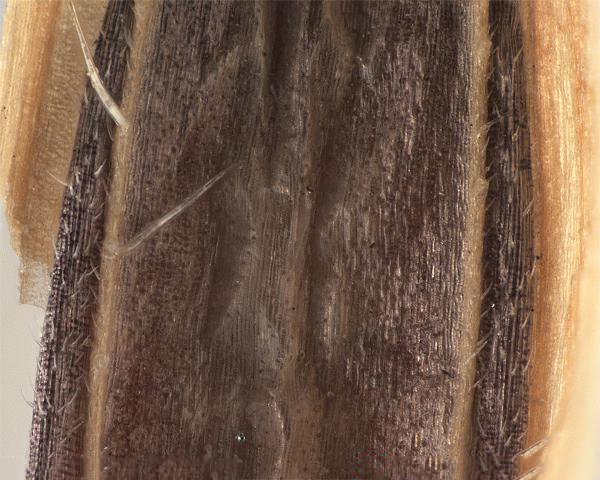Family
Poaceae
Common Name
Field brome
Regulation
Secondary Noxious, Class 3 in the Canadian Weed Seeds Order, 2016 under the Seeds Act.
Distribution
Canadian: Occurs in ON (Brouillet et al. 2016Footnote 1); previously reported in BC and QC but currently excluded from the floras (Marie-Victorin 1995Footnote 2, Brouillet et al. 2016Footnote 1, Klinkenberg 2013Footnote 3).
Worldwide: Native to southern and south-central Europe and temperate Asia, and widely naturalized further north in Europe and in other temperate regions of the world (Tutin et al. 1980Footnote 4, Barkworth et al. 2007Footnote 5, USDA-ARS 2016Footnote 6). In the United States it occurs in several states, particularly on the east coast (Barkworth et al. 2007Footnote 5).
Duration of life cycle
Annual
Seed or fruit type
Floret
Identification features
Size
- Floret length: 7.0 - 9.0 mm
- Floret width: 1.0 - 1.5 mm
- Awn length: 6.0 - 11.0 mm
Shape
- Long oval-shaped floret with a flared top and extended lemma sides
Surface Texture
- Lemma is papery and usually glabrous, can be scabrous on the upper half; margins often with hyaline margins
Colour
- Floret is straw yellow
Other Features
- Palea teeth longer than 1.0 mm.
- Awn does not bend away from the lemma.
Habitat and Crop Association
Roadsides, fields, forest margins and waste places (Barkworth et al. 2007Footnote 5). A weed of arable land in Europe, notably in winter cereals (Tutin et al. 1980Footnote 4). Adapted to the corn-belt region and eastwards in the United States (Williams et al. 2011Footnote 7) and sometimes grown for erosion control or as a cover crop (soil improver) (Wiersema and Leon 1999Footnote 8).
General Information
Field brome was introduced to North America as a cover crop in the 1920s, and now occurs in several U.S. states. In Canada it has persisted as a weed in experimental field plots at the University of Guelph since 1933. Dore and McNeill (1980Footnote 9) noted that "this versatile and early maturing annual would be difficult to control if it became widely established".
Similar species
Japanese Brome (Bromus japonicus)
- Japanese brome has a similar size, oval shape, straw colour and extended lemma sides as field brome.
- Japanese brome's awn is up to 3.0 mm shorter than field brome and bends away from the lemma. The lemma sides tend to extend further past the grain than field brome. Japanese brome has hairs on the upper half of the lemma, while field brome usually has glabrous lemmas.
Photos




Similar species

